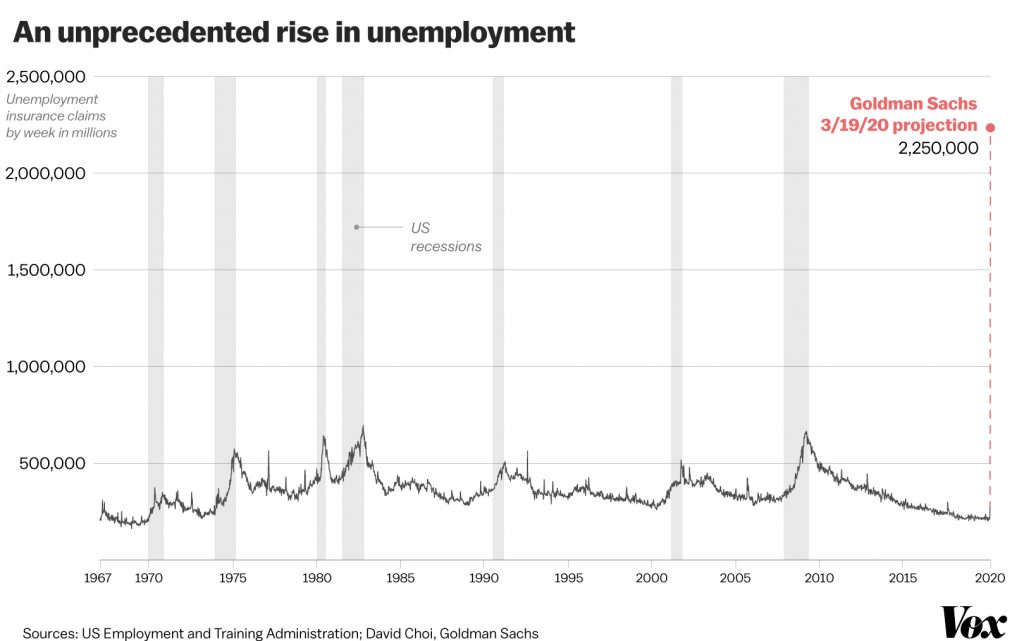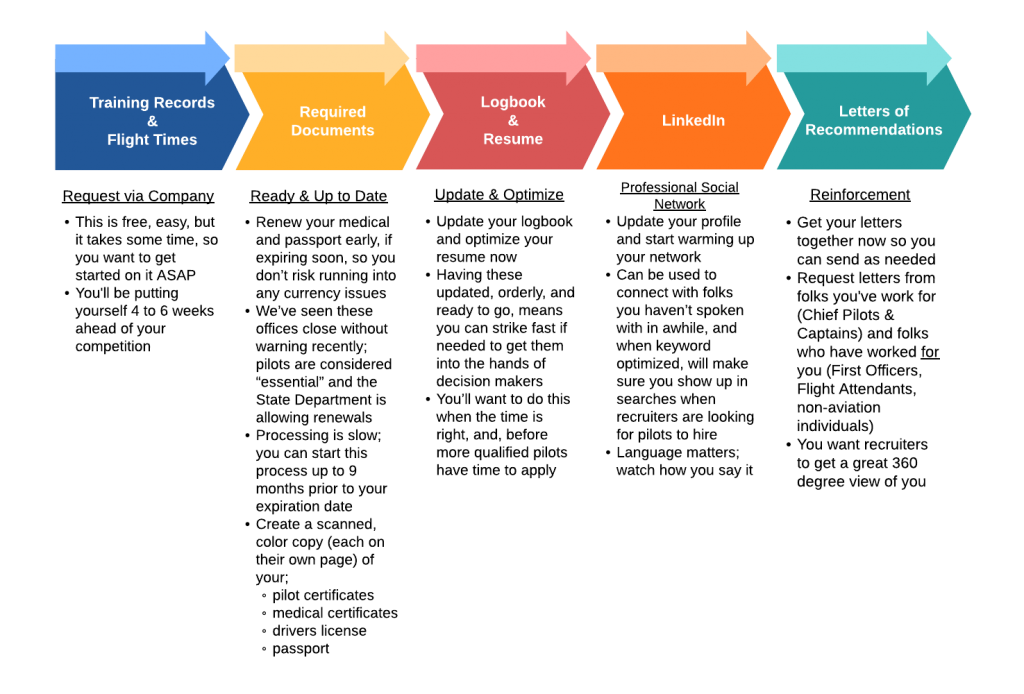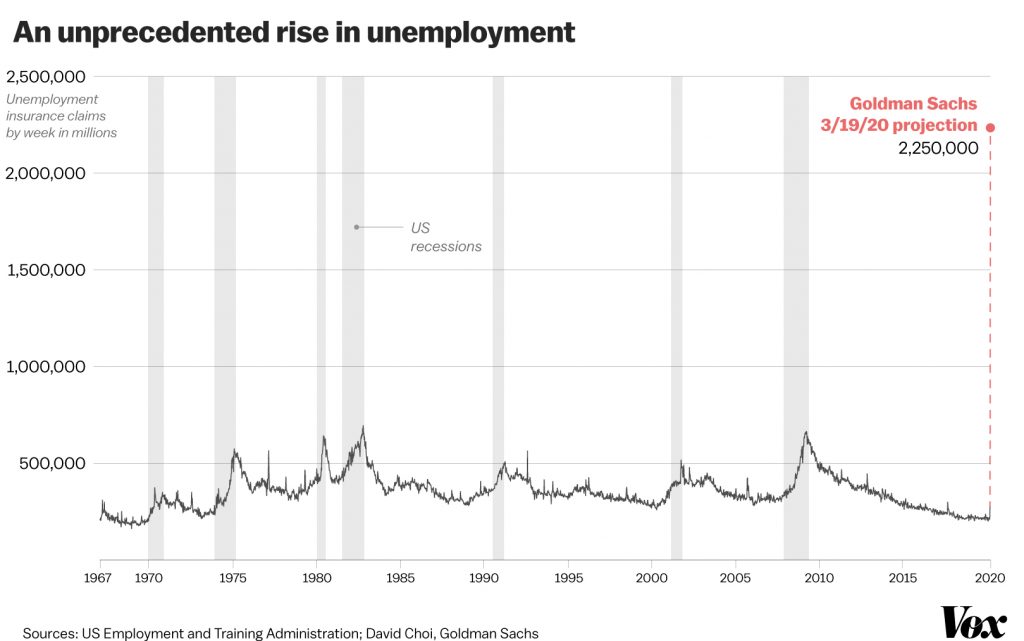GoJet Threatens 75% Furlough | What Does This Mean For Other Regionals?
KEY POINTS:
- Rick Leach, President and CEO of GoJet Airlines, published a memo to the pilots of GoJet Airlines on April 9th, updating them on the consequences surrounding the CARES Act.
- With demand for GoJet’s new 50-seat CRJ-550 down by around 90%, the airline has seen reductions in flying from their partner United Airlines over 60%.
- Mr. Leach states that while GoJet applied for assistance under the CARES Act the process is “lacking clarity” around their qualifying status; how much support is unknown and when they would actually receive funding.
- Mr. Leach expresses fear that the Treasury department may not be appropriately considering the way regional airlines operate and that GoJet must begin preparing for the possibility of no funding. If this is true, GoJet isn’t the only regional in danger of collapse.
- The memo goes on to say; “we currently have 70%+ more staff than we need to operate our reduced schedule.” He summarizes; the cuts that the company as a whole took in the previous month leave them “nowhere near enough to close the gap between revenue we received for operating our previous schedule and the revenue we are bringing in now.
- Unless GoJet receives immediate assurances from the Treasury regarding funding eligibility and distribution timeline, they will have no choice but to act without the support of this program and furlough a large percentage of their workforce.
- In a chilling final statement, Leach says “time is running out and we are burning cash that we don’t have. We must take every measure available to us to position ourselves as best we can to weather this crisis that is threatening our company and industry.”
>> Click here to read the entire letter to GoJet pilots
Pandemic Has Set the Number of Air Travelers Back Decades
KEY POINTS:
- Historical daily numbers only go back so far, but the nation last averaged fewer than 100,000 passengers a day in 1954, according to figures from trade group Airlines for America.
- The Transportation Security Administration screened 94,931 people on Wednesday, a drop of 96% from a year ago and the second straight day under 100,000...it includes some airline crew members and people still working at shops inside airport security perimeters.
- After the terror attacks on Sept. 11, 2001, and people were slow to get back on planes — U.S. passenger traffic didn’t grow again until 2003.
- Polling firm Public Opinion Strategies said that fewer than half the Americans it surveyed about 10 days ago say they will get on a plane within six months of the spread of the virus flattening.
- A Stifel Nicolaus analyst estimated that air travel demand won’t return to pre-outbreak levels until the middle of next year [2021] under the best outcome, and it’s likely to be later.
- The nation’s largest flight attendant union, which is worried about the safety of its members who are still flying, is demanding that the government ban all leisure travel.
- The recovery in air travel — whenever it occurs — could depend on many factors including social-distancing rules and the state of the economy, which is staggering as 16.8 million people — one in every 10 workers — have filed new claims for unemployment benefits in the last three weeks.
- “Theoretically, these consumers should be better-positioned financially to be able to travel again,” Harteveldt said, “but we are seeing people at all income levels and all ages affected by job loss or reduction in hours or working for companies that have closed.”

>> Click here to read the entire article written by David Koenig of the Associated Press[/fancy-ul]
ALPA: U.S. Aviation System May Grind to a Halt Without Swift Action by FAA to Protect Crewmember and Passenger Health
KEY POINTS:
- At least three ALPA pilots have died after contracting the coronavirus and approximately 200 of its members have tested positive for the disease.
- “Our members are the key to ensuring the safe transportation of passengers and cargo—and have been responsible for keeping the nation’s economy going in the midst of this global public health crisis. The least we can do for them is protect their health and safety,” wrote Capt. Joe DePete, ALPA president.
- Several of ALPA’s pilot groups reported being exposed to increasing levels of risk due to the airlines failure to comply with CDC guidelines.
- “This bureaucratic inertia needs to stop—and action must be taken now to protect lives. It is critical for our members as well as the travelling public and shipping community to ensure the continued safety of our industry,” continued Capt. DePete.
- Without action, DePete wrote, the system may “grind to a complete halt.”
>> Click here to read the entire article written by ALPA Media
Is Delta Air Lines' Global Strategy Backfiring?
KEY POINTS:
- Obviously the current situation is unprecedented, though I think I’m not alone in assuming — at least on the surface — that Delta is best positioned to come out of this situation the strongest. Delta has an advantage — they have the oldest average fleet age, so it’s also easiest for them to retire planes early.
- Delta’s strategy has long been to keep older planes and just maintain them well, because from a passenger’s perspective that’s better than getting a new plane and configuring it uncomfortably...they have a lot of room to shrink without it being too costly. These are planes that were going to be retired at some point anyway, so they can just push forward that timeline a bit.
- Delta has essentially been pursuing global aviation dominance through equity investments in foreign carriers, joint ventures, and in many cases, both. They’ve essentially written off the concept of the global alliances, realizing the value in instead strategically working with airlines that complement their network.
- They’ve [Delta] been so focused on investing in global airlines, and that works great when times are good. But when times aren’t good, it’s a different story. Simply put, many of the airlines that Delta has invested in are among the most vulnerable in the current climate. Obviously the current circumstances are extraordinary, though even in a “normal” recession, one would have to wonder how this strategy would play out.
>> Click here to read the entire article written by Ben Lucky of One Mile At A Time
When will we start traveling again? American and United Airlines hint at future in latest decisions
KEY POINTS:
- Between the sweeping elite-status extensions and the greatly-expanded change fee waivers, it seems like the industry is acknowledging what many of us refuse to admit to ourselves — it’s going to be fall, at the earliest, before we all start traveling again.
- As you can see, these waivers now include travel through the fall, and in United’s case through the end of the year. It’s likely only a matter of time before the other airlines make the same adjustments.
- This is less about the added convenience to passengers looking to reschedule their travel, and more about what it indicates about the forecast for flight demand.
- For a while, we heard airline executives hint that travel should begin rebounding around late summer or early fall. For instance, American’s latest schedule update has flights resuming in many of its major hubs beginning in mid-summer. When asked about whether this means planes would be full again, AA’s vice president of network planning, Brian Znotins, told TPG that “we’re building a schedule that presumes some recovery in demand.”
- Though United is still slashing flights, especially in the New York area, it too is seeing some demand recovering, particularly in China. It’s now considering returning to Shanghai, as the economy there begins restarting.
- The International Air Transport Association (IATA) thinks that travelers will be slow to take back to the skies. Instead, the organization expects a “significant recovery” to begin in 2021 at the earliest.
>> Click here to read the entire article written by Zach Griff of The Points Guy
Nearly a Third of Americans Didn't Pay Rent This Month, New Data Shows
KEY POINTS:
- Nearly a third of American renters didn't pay their rent this month. That's according to data from the National Multifamily Housing Council.
- Of more than 13 million units in the US that the report covered, 69% of renters paid their rent between April 1 and 5.
- During the same period in April 2019, 82% of households paid their rent on time, the report said. Just last month, 81% of renters paid rent by March 5.
- The federal government's $2 trillion stimulus bill will pad some Americans' falls: Renters in federally subsidized affordable housing can receive aid, including a 120-day moratorium on evictions and late fees.
- Most rental properties are owned by private landlords and therefore aren't eligible, though some multifamily landlords with federally backed mortgages may receive a forbearance on their payments as long as they don't evict their tenants.
- Almodovar said, there were likely logistical challenges to people paying the rent on time in April. Many offices were closed and standard operating procedures for much of daily life was disrupted. The 5th of the month, often when a late fee is incurred and when the NMHC survey period ended, also fell on a Sunday.
- We won't really have an accurate picture of what the impact of millions of people filing for unemployment will be until May, she said.
>> Click here to read the entire article written by Scottie Andrew & Anna Baney of CNN
When Should I Jump Ship?
With all of this unpredictability, how do you know when it’s the right time to jump ship? After all, airlines are all saying the same thing, ‘this is unsustainable.’ If airlines don’t get funding, if business does not pick up, if folks don’t start buying tickets, their business model is not viable. With so much uncertainty in the air, what should you be thinking and doing to protect yourself?
KEY POINTS:
- Individuals who can financially and emotionally withstand delaying decision making, until facts are clearer, will do best in this environment. The ability to adapt and avoid commitment in volatile situations buys you the flexibility to adjust as reliable information becomes available and events unfold. Those who can’t withstand the extreme stress and discomfort now, will likely pay a high price for committing to a new opportunity too early.
- As of today, there is not enough reliable information to make a rational decision that will keep you safe. We will need to wait until the government bailout process progresses further before we can begin making decisions based on reliable facts.
- Winners and losers will be chosen by the U.S. Government, not economic fundamentals. This means we can’t reliably tell what companies are safe right now as almost none are. No airline has the financial ability to weather this storm on their own and their future is solely in the hands of Secretary Mnuchin.
- For those out there who are currently furloughed, the decision to look for a new job is an easy one. For those who are still employed at the moment, the decision is far tougher and incredibly unclear. Afterall, how do you know a new company isn’t less stable than your current one?
- Many pilots will likely suffer major cuts in pay, quality of life, and career progression. As a result, they may begin looking inside and outside aviation for non-flying opportunities. While some pilots may avoid an involuntary furlough, they may still choose to take a voluntary one and lead the turn on their competition in securing a better job.
Should I Stay or Should I Go?
Right now we’re getting flooded with requests to schedule coaching sessions on how to establish a Plan B. Folks are tied up in knots over:
- What if I stay in my current position and they furlough me? Will I lose out on a future job because someone else beat me to the punch?
- What if I leave my current position and they don’t furlough? What if my new position does? Will I have made the worst decision ever?
- What should I do? How do I know I’m making the right call?
Let’s take some time and break this down step by step so you have the resources needed to start packing your Plan B parachute.
Protecting Against Loss
If you have a job, choosing to stay or leave is a very complex and agonizing decision right now. If you leave too early, you risk giving up a stable position or seniority number and losing everything. Whereas, if you stay, you risk being caught in a mass furlough and showing up late to the game in applying for whatever few positions are leftover. This mental trap is the root cause of all the confusion, anxiety, and panic so many are paralyzed by. The only way to safely escape this trap is by developing trustworthy leading indicators to help point out when it’s the exact right time to commit or jump ship.
Leading indicators are small economic factors that change before the rest of the economy begins to follow. Think of it as kind of an economic chip detector light followed by a noticeable increase in engine vibration; if you see those two things pop up, you know you’re about to have an engine failure well before one actually happens. Once we get a handle on some solid furlough leading indicators, we can step away from rash decision making, and step into a methodical, systems based approach to guiding our career choices.
Why Traditional Leading Indicators Unreliable
The aviation industry’s survival is in the hands of the U.S. Government, not airline executives. The Coronavirus, and associated economic recession, are truly Black Swan events that could not have been foreseen. As such, without federal aid, the airlines cannot keep themselves afloat. The fact that airline survival is based on government intervention, and not economic fundamentals, means that traditional leading indicators are obsolete here.
For example, if an airline were reducing flying schedules, parking aircraft, offering voluntary leaves, stopping hiring, and offering early buyouts, we would confidently say a furlough was on the horizon. Even better, we could predict the furlough percentages based on flying capacity reductions. The problem is, these reductions are happening everywhere, limited furloughs have occurred, and no company can sustain an 80% reduction in staffing and survive. That’s why these traditional leading indicators are really just ‘misleading indicators’.
What Should You Focus On Instead
Company Leading Indicators:
- What is management saying about the likelihood of securing non governmental funds?
- How much government funds are being released to other companies? To your company?
- When is your company receiving these funds?
- What is management’s plan once the funds run out?
- What is management saying about future ticket sales and when they’ll return?
Personal Debt Reduction:
- Where can you reduce debt and increase your financial flexibility?
- What debt can you pay off immediately?
- What debt can you consolidate at a lower fixed rate?
- Can you pay off student loans that can’t be shed in bankruptcy?
- What accelerated debt payments can you make now to avoid having to make monthly payments later?
Personal Budgeting & Savings:
- What non essential expenses can you reduce or cut now?
- What non essential expenses will you reduce or cut, if needed, later?
- Where can you save cash now (short-term nest egg) for potential use later?
- Can you run budget and savings scenarios for a pay cut vs. a job loss?
Career Prep:

Final Thoughts
Until we know who the government will support as winners, we won’t know who the losers will be. Committing to go to a new company right now is kind of like committing to get married before ever going on one date. There is no way to discern their financial stability and therefore no way to determine whether or not they will be able to support employing you. That’s why now’s the time to prepare, not the time to commit if you can avoid it. Check out our article here to learn more about how to stay sane while getting prepped for whatever’s next.
Additional Resources
How Does the Coronavirus Compare to 9/11?
How to Survive Disruptive Change
Are Furloughs Coming?
What Should Pilots Do In These Uncertain Times?
James Onieal & Jason DuVernay
:
Apr 12, 2020 2:00:54 PM

